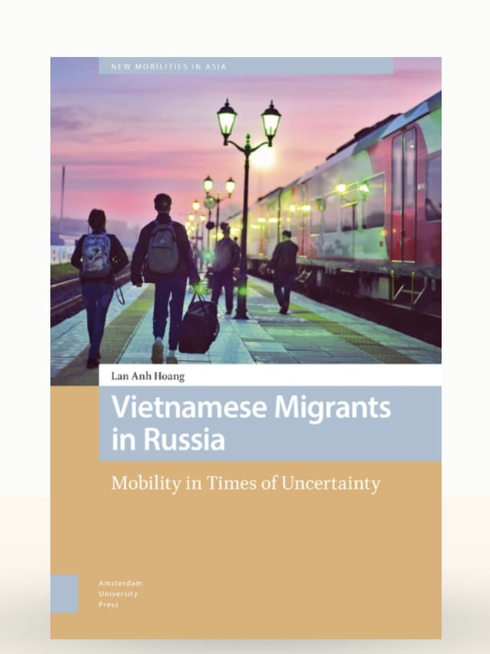Khải Huyền wrote this book review article in Vietnamese and published it in Luật Khoa Magazine on March 11, 2025.
Every year on September 2, Việt Nam proudly marks its National Day. But the meaning of this date is still debated. Some say it was a moment the Communist Party claimed as its own-casting itself as the force that brought independence from French colonial rule.
We won’t dive into that debate here. Instead, as Việt Nam celebrates, we want to look at something just as telling: even today, many Vietnamese continue to leave the country in search of better opportunities abroad, starting with this article.
***
In her 2020 monograph, Vietnamese Migrants in Russia – Mobility in Times of Uncertainty, Dr. Hoang Lan Anh, a professor of development studies at the University of Melbourne, explores the precarious lives of undocumented Vietnamese migrants. Her meticulously conducted research, based on interdisciplinary analysis and extensive fieldwork in Moscow from 2013 to 2016, sheds light on the historical and economic ties between the two countries and the challenges faced by this community.
Russia’s Immigration Paradox
The book’s first three chapters analyze Russia’s complex history and immigration policies. The author establishes that Russia has the world’s largest shadow economy and is the second-largest immigration destination after the United States, making it a major market for low-cost goods supplied by migrant communities from developing countries.
Despite its large-scale economy, Russia remains heavily dependent on energy and grapples with instability from political upheavals—particularly armed conflicts. This creates a paradox: even as immigration policies grow more restrictive and administrative procedures remain complex, many undocumented migrants—mainly from former Soviet countries, China, and Việt Nam—exploit widespread corruption to make a living.
Within this system, there is a clear division of labor by nationality: Armenians dominate construction, Kyrgyz migrants are prevalent in cleaning and logistics, while the garment industry is the primary domain of the Vietnamese and Chinese communities. Russia’s immigration policy constantly oscillates between a high demand for migrant labor and deep-seated social prejudice. Anti-immigrant crackdowns often fail to stem the flow of migration and instead become lucrative sources of income for corrupt law enforcement.
A Climate of Mistrust
Chapter 4 analyzes the challenges faced by Vietnamese traders in Russia’s informal markets, which is dominated by intense competition and a pervasive lack of trust. As the author observes, “Trust among Vietnamese migrants is even more fragile than between them and other ethnic groups, even though their co-ethnic networks serve as vital sources of support, information, and social welfare.”
This climate of suspicion means traders hide both good news for fear of rent hikes and bad news for fear of being unable to borrow money. They also constantly face the threat of theft and, as undocumented migrants, are offered no protection under the law.
Love and Survival in a Foreign Land
Chapter 5 explores the romantic and sexual relationships within the Vietnamese migrant community. Far from home and isolated from Russian society, many find their emotional lives hollowed out by the singular goal of earning money. In this unstable environment, extramarital relationships based on economic calculation and mutual dependence become commonplace, captured by the popular saying: “Russia is easy to go to, hard to return from. Men return with new wives; women return with children.”
Despite living abroad, entrenched gender norms remain intact, with a persistent double standard for men and women in these relationships. An older man in a relationship with a younger woman is seen as normal, but if the roles are reversed, he is deemed “unmanly,” and she is judged as “an aging woman with no dignity”—even though the nature of the relationships is essentially the same.
Conclusion
Ultimately, this is a richly informative book that blends interdisciplinary analysis to highlight both the vulnerability and agency of Vietnamese migrants in their struggle to survive in Russia. It reveals how geopolitical forces shape individual lives and migration paths.
What sets the book apart is its unflinching portrayal of the economic, legal, and emotional precarity faced by ordinary people who have left their homeland in search of a foothold in a foreign land.

